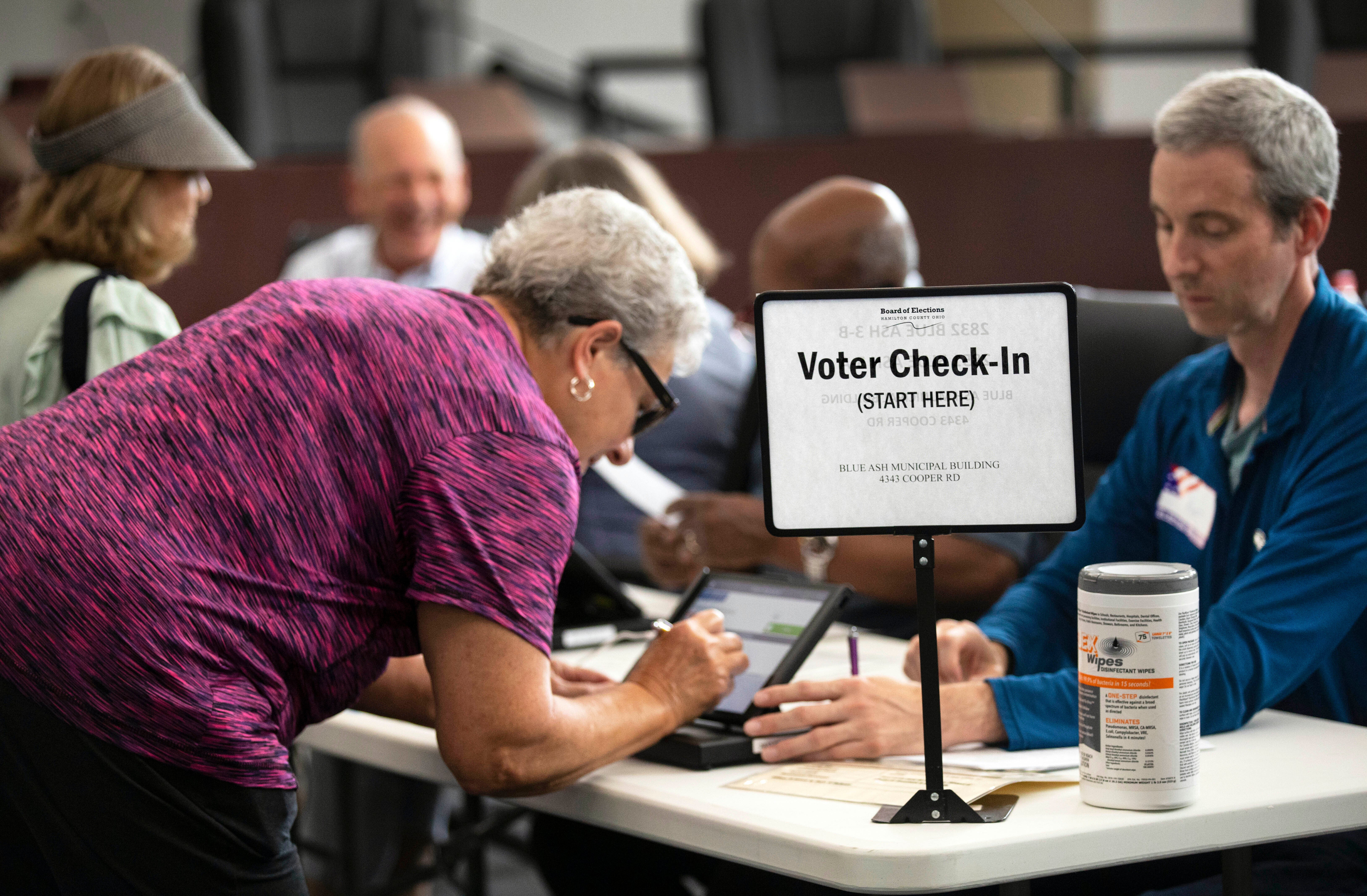LOCALIZE IT: Conspiracies target effort to clean voter rolls

Your support helps us to tell the story
From reproductive rights to climate change to Big Tech, The Independent is on the ground when the story is developing. Whether it's investigating the financials of Elon Musk's pro-Trump PAC or producing our latest documentary, 'The A Word', which shines a light on the American women fighting for reproductive rights, we know how important it is to parse out the facts from the messaging.
At such a critical moment in US history, we need reporters on the ground. Your donation allows us to keep sending journalists to speak to both sides of the story.
The Independent is trusted by Americans across the entire political spectrum. And unlike many other quality news outlets, we choose not to lock Americans out of our reporting and analysis with paywalls. We believe quality journalism should be available to everyone, paid for by those who can afford it.
Your support makes all the difference.EDITORS/NEWS DIRECTORS:
A bipartisan effort to help states combat voter fraud and ensure accurate lists of registered voters has found itself in the crosshairs of conspiracy theories fueled by Donald Trump’s false claim the 2020 election was rigged.
One state has left the Electronic Registration Information Center, more commonly known as ERIC, another is in the process of doing so and a handful of other Republican-led states are weighing whether to stay. The effort has become a target of suspicion among some Republicans after a series of online posts early last year questioning its funding and purpose.
ERIC was formed a decade ago by seven states and relies on data sharing to help states identify and remove people from their voter lists who have died or moved to other states. It currently includes 32 states and the District of Columbia, although that will change in April when Alabama formally exits the group.
Federal law requires states to conduct what is known as “list maintenance,” removing individuals from their voter rolls who are no longer eligible. This work must be uniform, nondiscriminatory and in compliance with the Voting Rights Act, according to federal law.
Federal law prohibits this activity within 90 days of an election.
___
READ AP’S STORY
Election conspiracies fuel dispute over voter fraud system
___
ADD LOCAL CONTEXT
States that participate in the ERIC program says it’s an important tool to keep their voter rolls accurate and identify any potential voter fraud involving people who cast ballots in multiple states.
Here is a list of current ERIC member states. Learn more about the program here.
Alabama (In April, Alabama will no longer be a member)
Alaska
Arizona
Colorado
Connecticut
Delaware
Florida
Georgia
Illinois
Iowa
Kentucky
Maine
Maryland
Massachusetts
Michigan
Minnesota
Missouri
Nevada
New Jersey
New Mexico
Ohio
Oregon
Pennsylvania
Rhode Island
South Carolina
Texas
Utah
Vermont
Virginia
Washington
Washington, D.C.
West Virginia
Wisconsin
___
DIG DEEPER
Regardless of whether your state is a member of ERIC, it’s important to understand what list maintenance looks like in your state. Voting rights groups have long been concerned about overly aggressive list maintenance that could result in eligible voters being removed.
Where to start?
The National Conference of State Legislatures has this helpful brief on voter list maintenance: https://www.ncsl.org/elections-and-campaigns/voter-registration-list-maintenance
The U.S. Election Assistance Commission conducts a survey after each federal election and publishes a detailed report that includes information on registered voters and list maintenance activities by state.
The most current report, from the 2020 election, can be found here: https://www.eac.gov/sites/default/files/document_library/files/2020_EAVS_Report_Final_508c.pdf
Details on voters removed from the rolls can be found beginning on page 165 of the report.
In addition, state and local election officials will be a good resource for providing the latest information on their list maintenance activities.
Questions to ask: What are the various reasons someone can be removed from the state’s voter list? What data sources is used to identify potentially ineligible voters? How is this information verified? What guardrails are in place to ensure eligible voters are not removed? How many voters have been removed in each of the categories in recent years?
___
READ MORE FROM AP
https://apnews.com/hub/politics
___
Localize It is an occasional feature produced by The Associated Press for its customers’ use. Questions can be directed to Katie Oyan at koyan@ap.org.